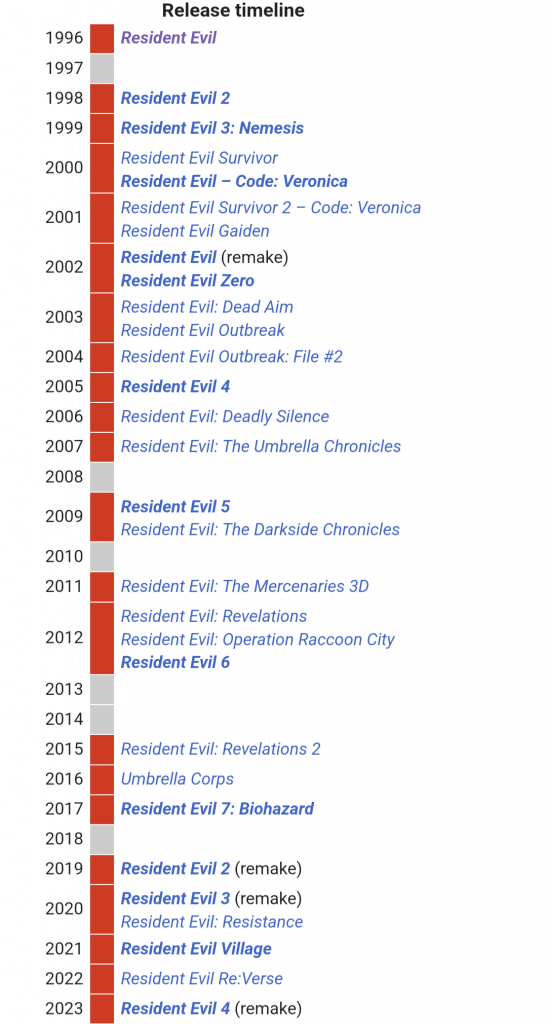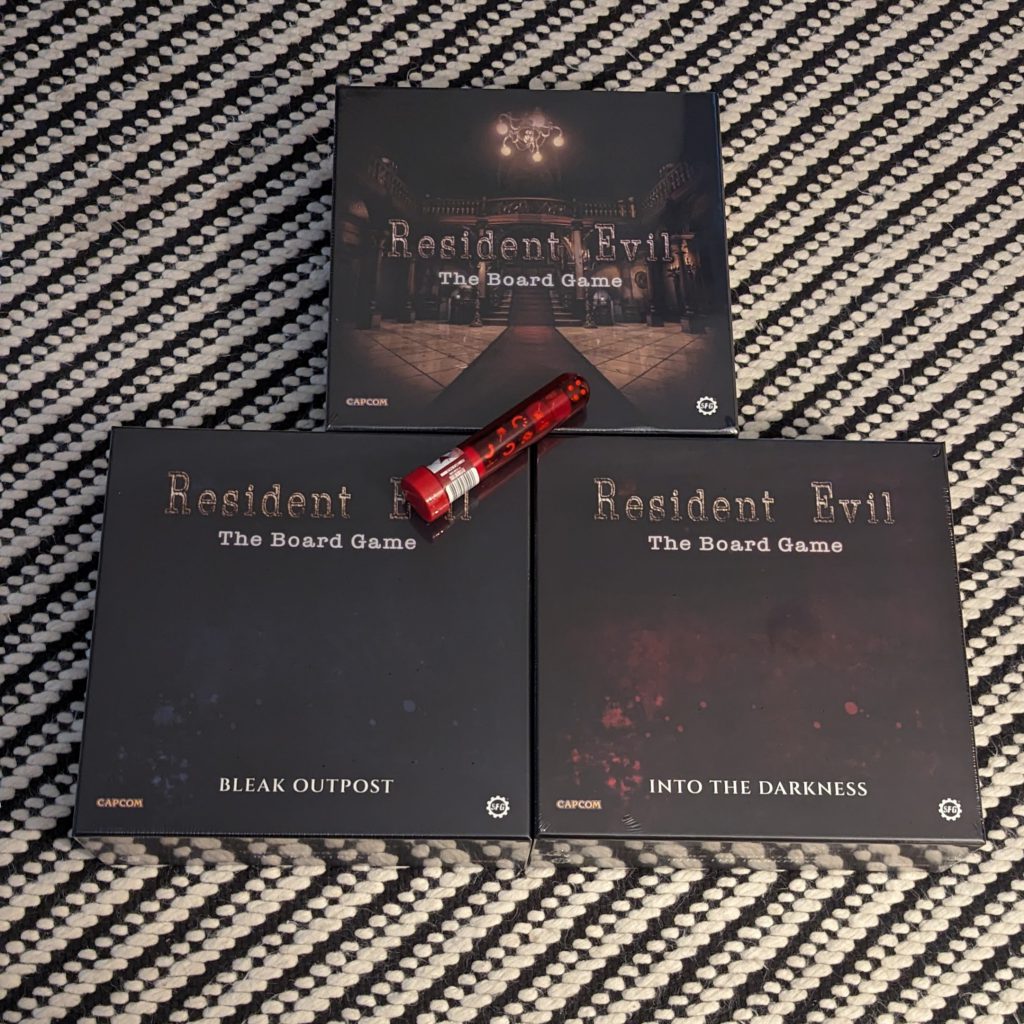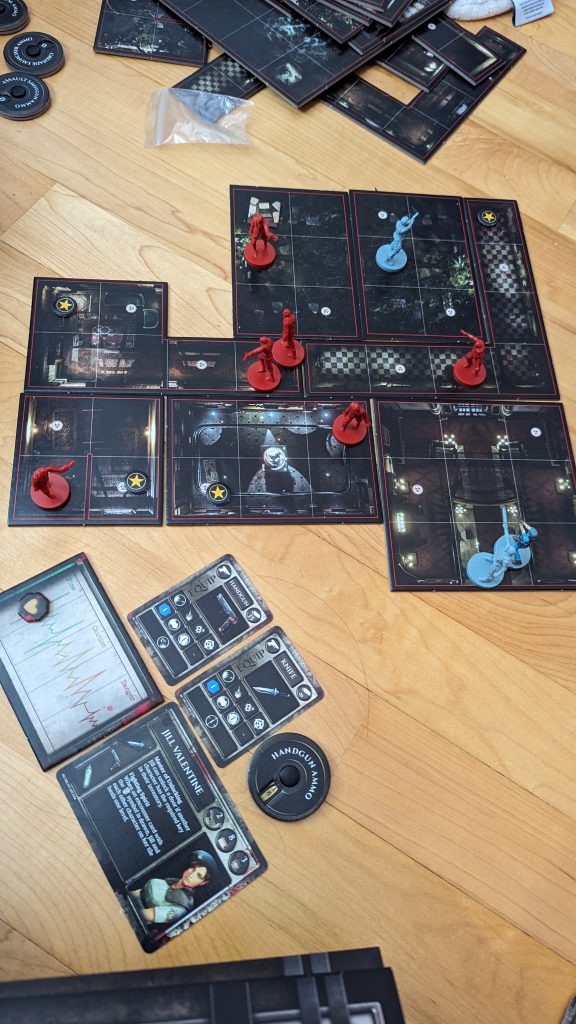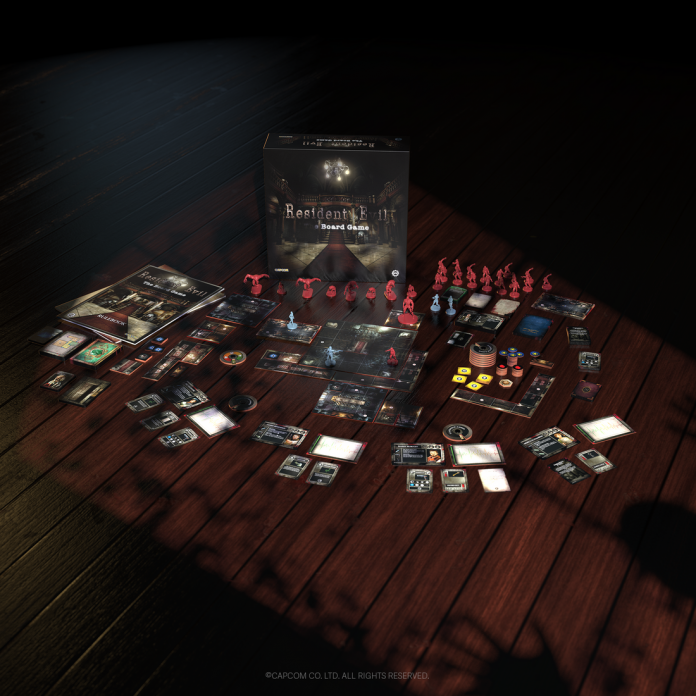The Resident Evil franchise has been through a lot. Rebrands, remakes, the Paul W. S. Anderson movies, the animated movies, the show and other show, the various bits and bobs that I had no idea existed (there are books? Comic series? Stage plays?), the controversial at best Resident Evil 6 and near universally despised Umbrella Corps, the side games and spin-offs— all of which has led to a release timeline that’s almost as complicated as the borderline soap-opera-esque story. Despite all of that, I still have the same way of introducing the franchise to someone new as I did years ago: “Imagine every single 80’s-90’s-2000’s B-movie horror trope shoved into one video game franchise, with a twist: It’s actually kind of scary. Sometimes.

Steamforged Games has done something great with their adaptation of the first Resident Evil onto the tabletop: They’ve kept that exact same energy. It’s a little silly, especially when playing with people with next to no experience with the franchise and explaining that “no, we don’t know how exactly the herbs heal them.” It’s a little spooky, not knowing what is around the next corner. It’s fun, it’s a little frustrating, (I don’t think my friends quite understood why I got so irrationally angry whenever we encountered those stupid dogs that push you to the floor over and over and–) and it’s just a good time overall.
Rated 4 out of 5 STARRRSSSSSSS (You can’t play as Wesker)
This is a big game. The rulebook estimates a full campaign takes around 30 hours, which is nearly twice as much time as I have on my 100% Resident Evil save, and judging by the fact that it took my group an hour or so to get through the tutorial, it’s probably about right. The expansions— both of which were graciously provided by Steamforged Games— make it even bigger, adding in new areas and, of course, new monsters. Each seems to match the quality of the main game, and serves as a great, well, expansion.

The monsters, along with our intrepid heroes, are portrayed in miniature format, all of which are pretty well sculpted. Their thin size can make painting a little difficult, as evidenced by my… lackluster attempts at laying some color down on Jill Valentine– one of the stars, and member of the STARS team, along with Chris Redfield, Rebecca Chambers, and Barry Burton.
Overall, however, the miniatures are pretty solidly built, and give off a good first impression. A good impression that lasted all the way through my first intrepid adventure into the infamous Spencer Mansion. The mansion itself is constructed cleverly, through the use of tile layouts which are outlined in each section of the exploration rulebook. Each tile is demarcated with locations for items, puzzles, and of course, zombies. From there the game operates on a square based system: attacks, movement, and interactions all have a range of a certain number of squares. It’s pretty intuitive, thankfully, given depth by each character’s individual abilities.

That boulder punching maniac!
Every bit of this game made me, as a Resident Evil fan, beyond excited. The gameplay, the puzzles, every little in-joke and reference (Jill has a skill called “master of unlocking,” because of course she does) felt straight out of the games. This doesn’t mean that there’s no fun to be had for newcomers to the series: None of my friends had ever played a Resident Evil game before, and they were having just as much fun once we got down into the actual gameplay. Moving the miniatures, keeping track of bullets and medical supplies, picking off zombies: every bit of it was a pretty good game, wrapped in a Resident Evil themed shell. There is a drawback to that shell, however, and that is that it isn’t a perfect introduction for newcomers. Like any game set in an existing world, it’s hard to get people who don’t know anything into it. In my experience, however, the game is good enough that it speaks for itself.
It’s pretty well polished, even if the rulebook can be a pain to navigate. We could find answers to every question we had pretty easily once we flipped through it a few (somewhat painstaking) times, which is always a good sign.
You were almost a Jill sandwich!
Unfortunately, all of this comes at a cost, and a steep one at that: priced at $99.99 USD, the base game is already a pretty penny. Factoring in the expansions— $64.99 USD a pop— the full game comes in at a whopping ~230 USD. While there are hours of content and fun to be had, the price makes it much harder to justify picking it up. Those $230 USD will net you a total of 36 miniatures, all the cards and tokens needed to play, and the tiles themselves, totaling up to an estimated ~46 hour long campaign through Spencer Mansion. To put it this way, the Resident Evil Remake is less than $20 USD on Steam, and clocks in at around 15 hours for 100% completion: while this might be an unfair comparison, a playthrough of Resident Evil: The Board Game is about 3 times as long as the source material, and costs about 11 times more.
All in all, Resident Evil: The Board Game is something that a gaming group could absolutely sink their teeth into for a long, long time and leave pretty satisfied. Although I wasn’t able to get through a full campaign, the experience of the first few hours was fun, polished, and pretty well designed– attributes that are unlikely to change in the later hours. Whether it’s being played by Resident Evil fans, zombie movie fans, or just plain old board game fans, there’s plenty of campy, horrifying, zombie filled fun to be had. The large price makes it hard to wholeheartedly recommend, but if you’re willing to pay, it’ll definitely be a good time.


